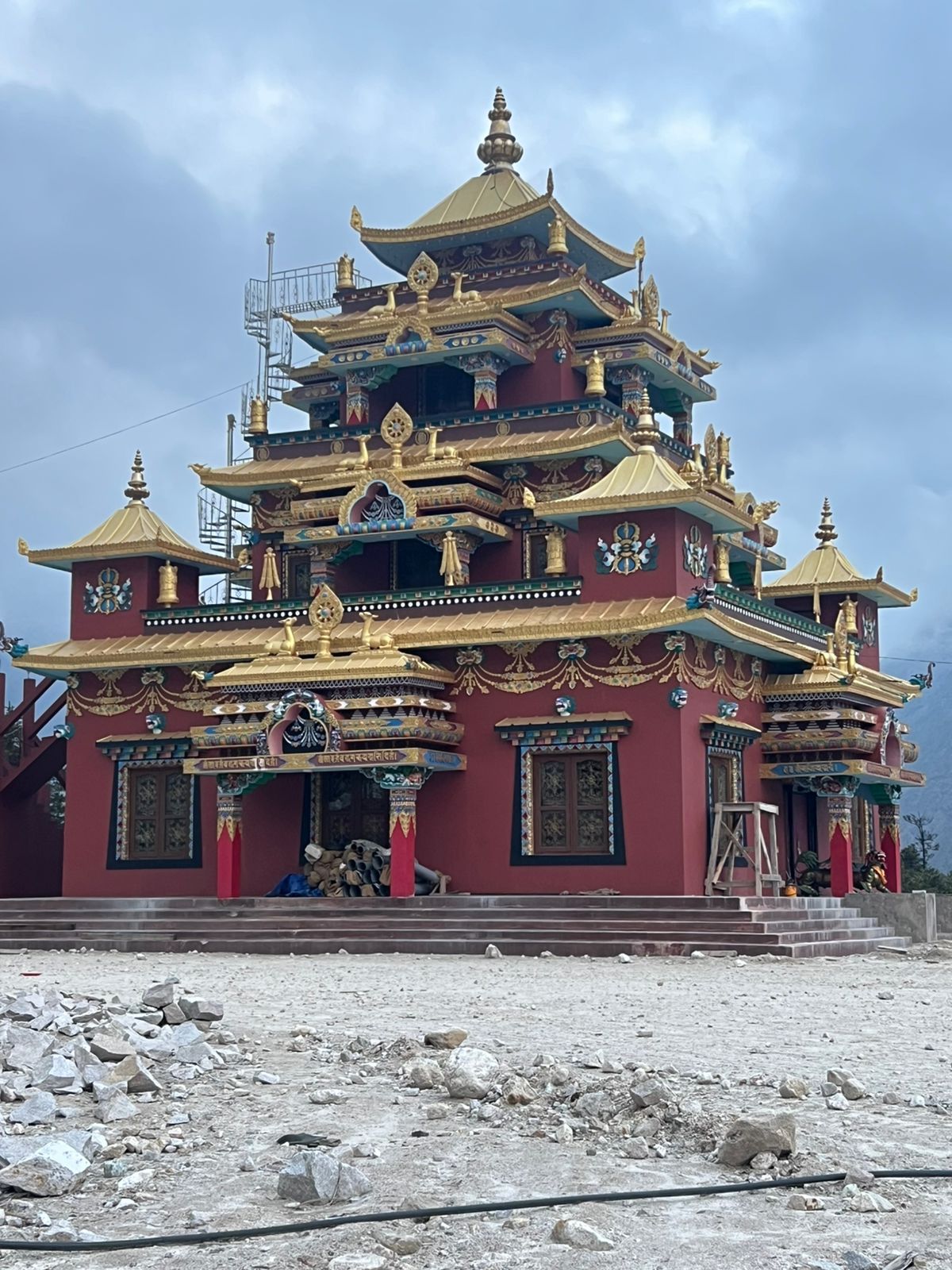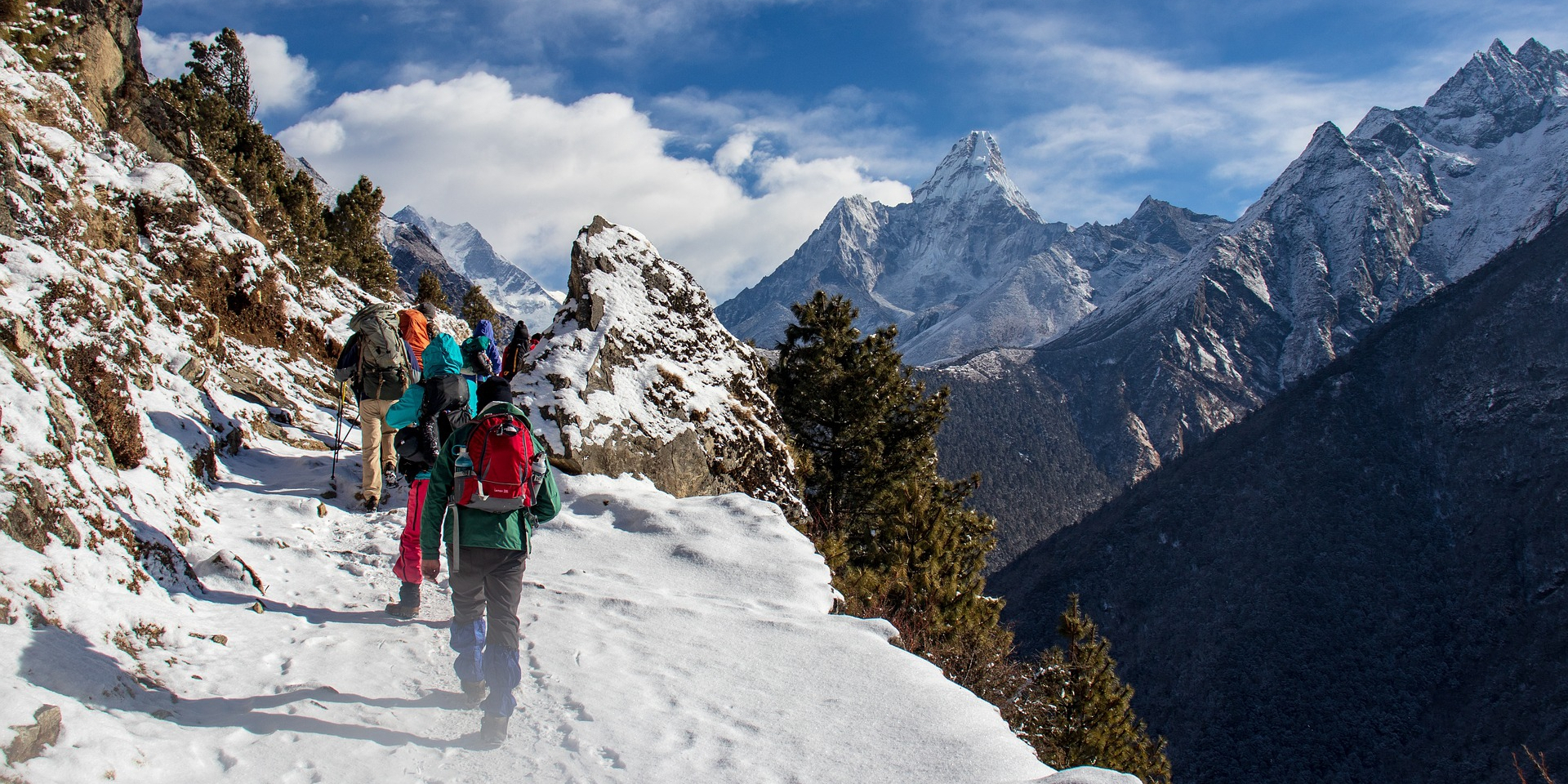Dingboche Village in Everest Region: Altitude, Weather & Trek Tips
Dingboche is a quiet village located in the high-altitude Khumbu Region of Nepal, and is an important acclimatization stop on the way to Everest Base...

The Manaslu Circuit Trek is one of Nepal’s most breathtaking and underrated trekking routes. While treks like Everest Base Camp and Annapurna Circuit often steal the spotlight, the Manaslu Circuit remains a hidden jewel that blends adventure, culture, and natural beauty in perfect harmony.
This trail circles Mount Manaslu (8,163 m), the world’s eighth-highest mountain, offering jaw-dropping views of snow-capped peaks, serene valleys, and remote Himalayan villages. Unlike other popular trails, the Manaslu Circuit Trek is far less crowded, making it a favorite among trekkers seeking solitude, authenticity, and an off-the-beaten-path experience.
So, what makes this trek so special? Let’s dive in.
Nepal offers countless trekking options, but the Manaslu Circuit Trek stands out for several reasons:
Less Crowded: Unlike the Everest and Annapurna regions, this circuit is relatively untouched by mass tourism.
Cultural Richness: The trek passes through villages heavily influenced by Tibetan culture.
Diverse Landscapes: From subtropical forests to alpine glaciers, the trail offers changing scenery at every turn.
Adventure Factor: Crossing the Larkya La Pass (5,160m) adds a challenging yet rewarding thrill.
If you’re looking for an authentic Himalayan adventure away from bustling crowds, Manaslu delivers in spades.
 Cultural Significance of the Manaslu Region
Cultural Significance of the Manaslu RegionThe Manaslu region shares a border with Tibet, which has a heavy influence on its language, culture, and traditions. Many villages still practice Tibetan Buddhism, and you’ll notice prayer flags, mani walls, and chortens adorning the trail.
From Sama Gaun’s Pungyen Monastery to centuries-old gompas perched on ridges, trekkers often find themselves captivated by the spiritual energy of the region. These sacred places not only offer cultural immersion but also provide peaceful resting points along the journey.
The Manaslu Circuit Trek usually takes 14–18 days, depending on your pace and itinerary. Here’s a breakdown:
The trek begins with a scenic drive from Kathmandu to Soti Khola. From here, the trail passes through lush forests, rivers, and suspension bridges before reaching Machha Khola.
As you ascend, villages like Jagat and Deng showcase a mix of Hindu and Buddhist cultures. Namrung offers the first real panoramic views of Manaslu.
Sama Gaun is one of the trek’s highlights, where trekkers often spend a rest day to acclimatize. Samdo, near the Tibetan border, provides a glimpse into the unique highland lifestyle.
The trek culminates in the challenging but rewarding crossing of the Larkya La Pass. At 5,160 meters, the panoramic views of Himlung Himal, Cheo Himal, and Annapurna II are unforgettable.
The Manaslu Circuit Trek is considered moderately difficult. While it doesn’t require technical climbing skills, trekkers should be prepared for long days of walking, steep ascents, and high-altitude conditions.
On average, trekkers hike 6–7 hours per day, covering rugged trails, river crossings, and steep climbs. A good fitness routine involving cardio, strength training, and endurance exercises can make the trek much more enjoyable.
The trek reaches over 5,000 meters, which means altitude sickness is a real risk. Symptoms may include headaches, nausea, and fatigue. The key is to ascend gradually, take acclimatization days, and drink plenty of water.
Start training at least 2–3 months before your trek.
Practice long hikes with a backpack to simulate trekking conditions.
Focus on leg strength, stamina, and breathing exercises.
The Himalayas experience distinct trekking seasons. Choosing the right time is crucial for both safety and enjoyment.
The most popular time to trek. Clear skies, crisp weather, and stunning mountain views make it ideal.
Another excellent season with mild temperatures and blooming rhododendrons adding color to the trails.
Winter (December–February): Harsh snow and freezing conditions make Larkya La Pass dangerous.
Monsoon (June–August): Heavy rain brings landslides and leeches, making trails slippery and risky.
Because the Manaslu Circuit Trek passes through restricted areas, special permits are required.
Issued only through registered trekking agencies, these permits ensure responsible trekking in border regions.
Helps protect the fragile ecosystem and wildlife of the region.
Since the trail connects with the Annapurna region, this permit is also required.
Tip: Always carry multiple passport-sized photos and copies of your documents for permits.
Tea Houses and Lodges
Accommodation is simple but cozy. Tea houses provide a warm bed, basic facilities, and a chance to connect with locals. Don’t expect luxury—this trek is about adventure and authenticity.
Local Nepali Cuisine on the Trail
Dal Bhat (rice and lentils), momo (dumplings), and Tibetan bread are common meals. Eating local food not only supports the community but also provides much-needed energy for trekking.
The overall cost depends on whether you trek with a guide, porter, or independently (which is not recommended due to restricted permits).
Guided vs. Independent Trekking Costs
Guided trek (15 days): $1,200–$1,800, including permits, food, and lodging.
Independent trek: Lower cost but permits require you to hire a licensed guide.
Budget Breakdown
Permits: $100–$150
Food & Lodging: $25–$35 per day
Guide & Porter: $25–$40 per day
Transport (Kathmandu–Soti Khola & back): $50–$100
Flora and Fauna of the Manaslu Region
The trek passes through lush forests of pine, rhododendron, and oak. Wildlife includes snow leopards, Himalayan tahr, and red pandas—though sightings are rare.
Snow-Capped Peaks and Glaciers
The highlight is, of course, Mount Manaslu, but trekkers are also rewarded with views of the Ganesh Himal, Himlung Himal, and Annapurna ranges.
Thermal base layers
Down jacket
Waterproof trekking boots
Warm gloves and socks
Trekking poles
Sleeping bag (-10°C rating recommended)
Water purification tablets
Headlamp and power bank
Respect local culture and customs.
Avoid single-use plastics—carry a refillable water bottle.
Support local tea houses instead of carrying packaged food.
Always trek with a guide, carry a first aid kit, and keep emergency contacts handy. Mobile networks are limited, so consider a satellite phone if going deep into remote areas.
Key Similarities and Differences
Everest Base Camp: More commercialized, with higher altitude challenges.
Annapurna Circuit: Easier logistics but more crowded.
Manaslu Circuit: Best mix of remoteness, culture, and natural diversity.
Which Trek is Right for You?
Choose Everest if you want the ultimate Himalayan challenge.
Choose Annapurna if you want accessibility and comfort.
Choose Manaslu if you seek peace, culture, and off-the-beaten-path adventure.
Q1: How many days does the Manaslu Circuit Trek take?
Most itineraries take 14–18 days, depending on acclimatization and pace.
Q2: Do I need a guide for the Manaslu Circuit Trek?
Yes. Solo trekking is not allowed due to restricted permits. A licensed guide is mandatory.
Q3: What is the maximum altitude reached?
The trek reaches Larkya La Pass at 5,160 meters.
Q4: Is the trek suitable for beginners?
It’s moderately difficult, so beginners can attempt it with proper preparation and fitness training.
Q5: Can I trek the Manaslu Circuit in winter?
Not recommended, as snow often makes the Larkya La Pass impassable.
Q6: What makes the Manaslu Circuit unique compared to Annapurna or Everest?
Its remoteness, cultural immersion, and fewer crowds make it a standout trek.
The Manaslu Circuit Trek is a perfect blend of adventure, natural beauty, and cultural richness. It challenges trekkers while rewarding them with untouched landscapes and authentic Himalayan experiences. For anyone seeking an alternative to the crowded trails of Everest and Annapurna, this trek is an absolute must.
Ready to plan your trip? Check out the Nepal Tourism Board’s official website for updated permit details and trekking guidelines: https://ntb.gov.np


Dingboche is a quiet village located in the high-altitude Khumbu Region of Nepal, and is an important acclimatization stop on the way to Everest Base...

Nepal offers a wide variety of trekking trails. If you have less time for trekking, don’t worry, there are plenty of options for travelers to get that...

Vipassana meditation allows you to perceive and see things in their natural sensations, recognize pure energy, and adapt to the 4 noble truths of Bud...
Discover incredible offers for your upcoming adventure by subscribing to our newsletter with the latest travel tips and updates.
